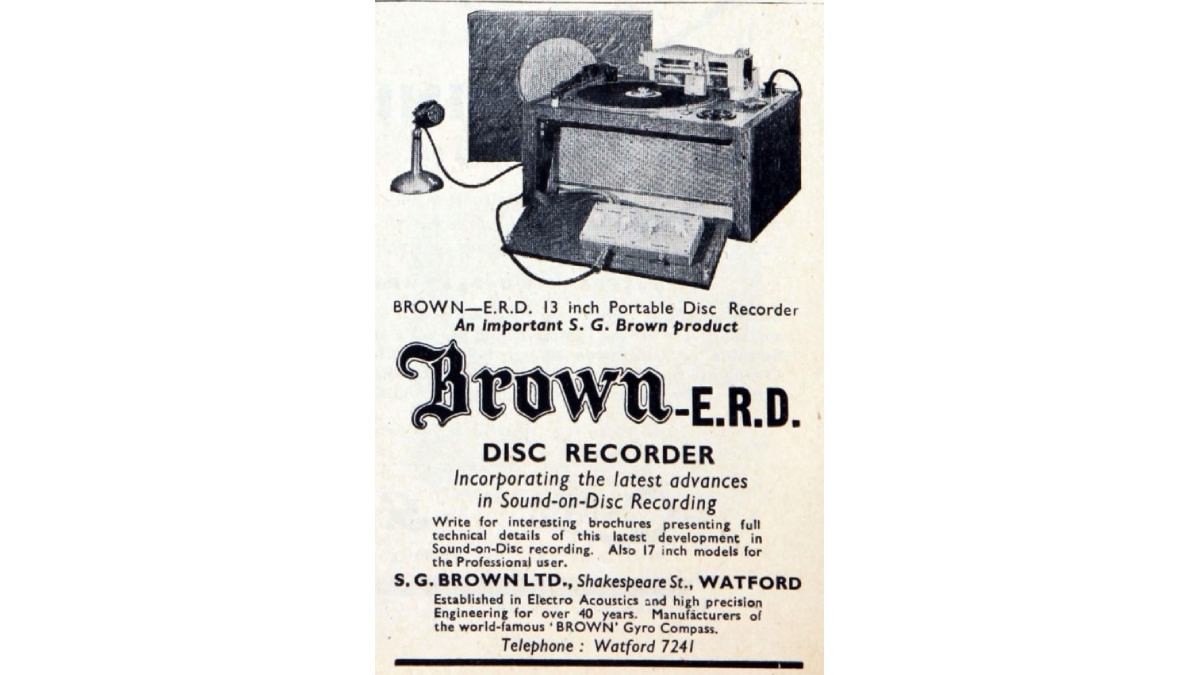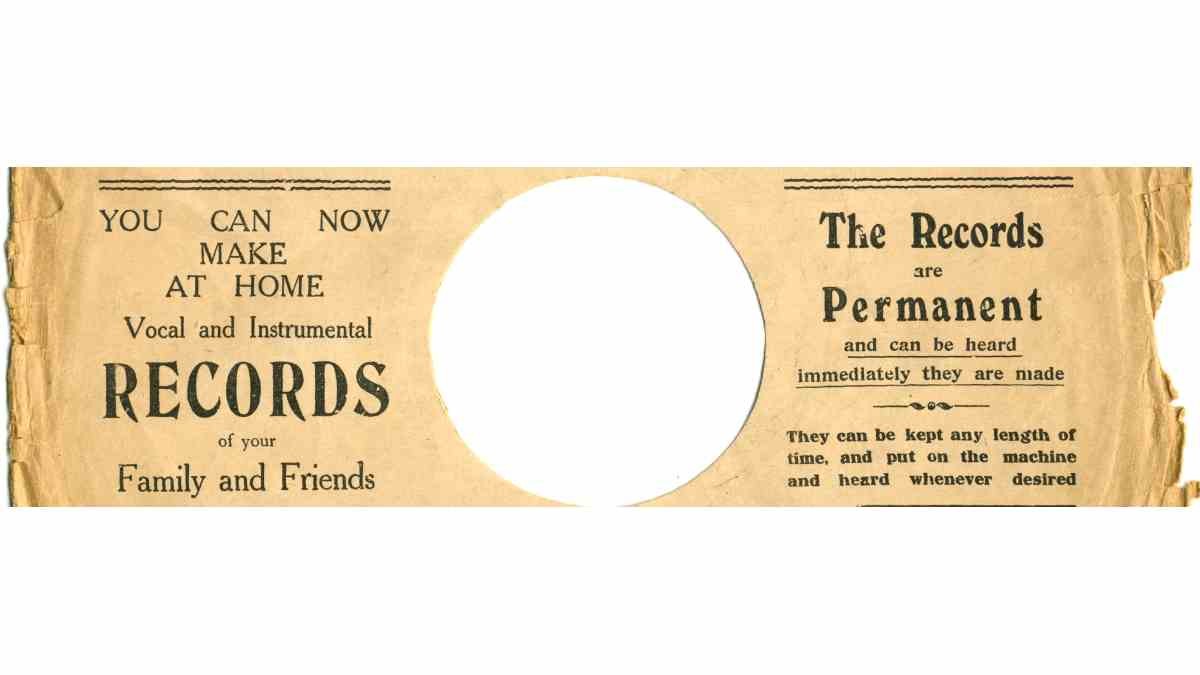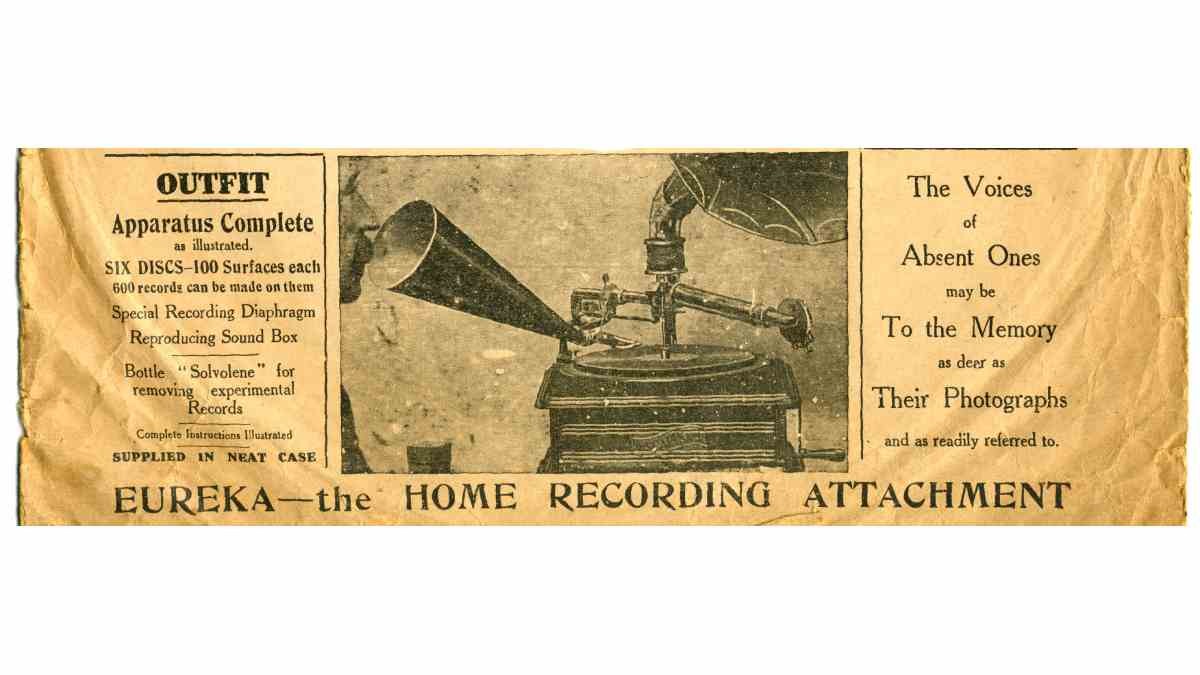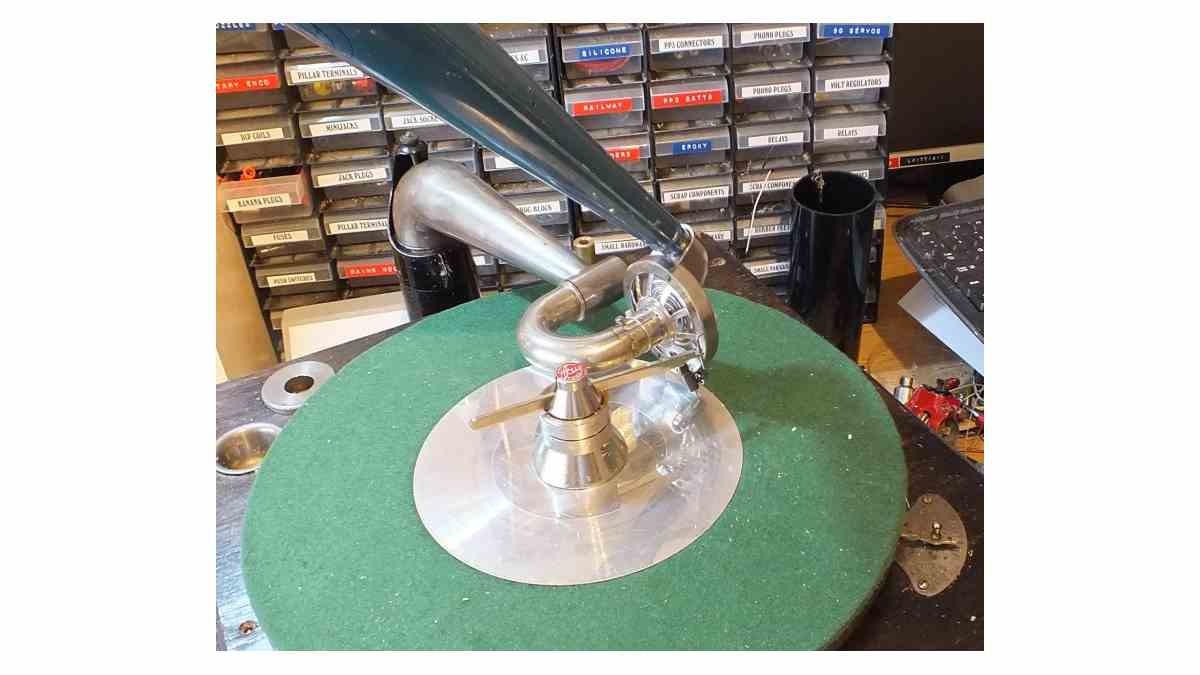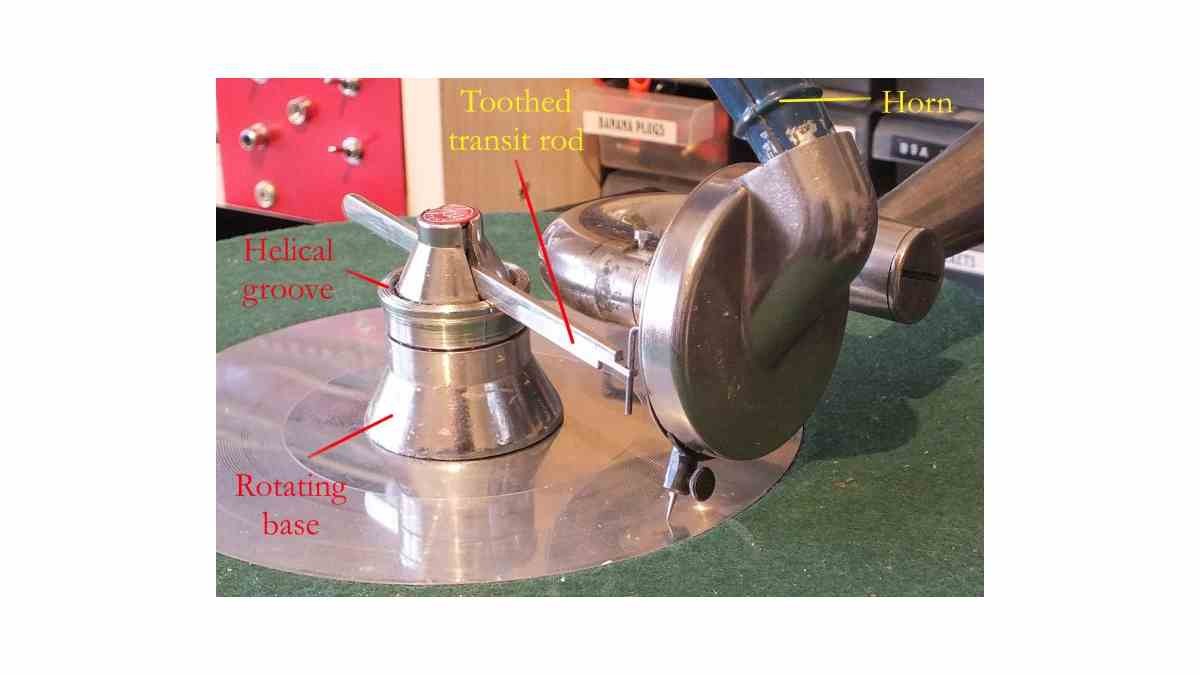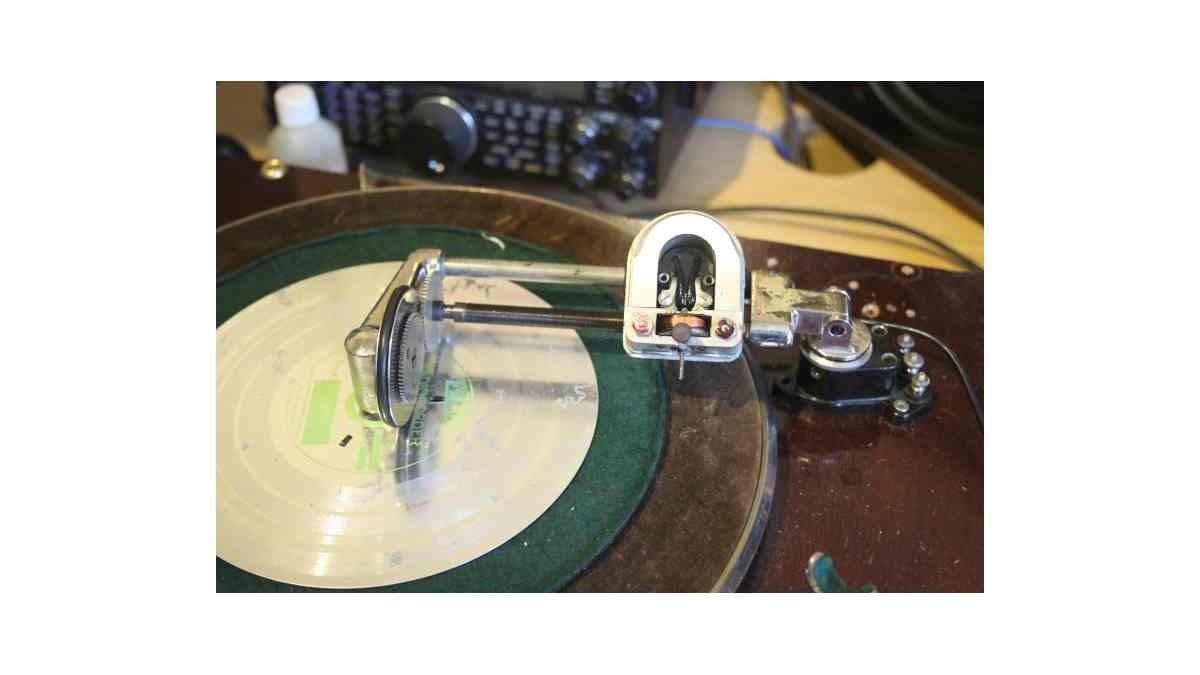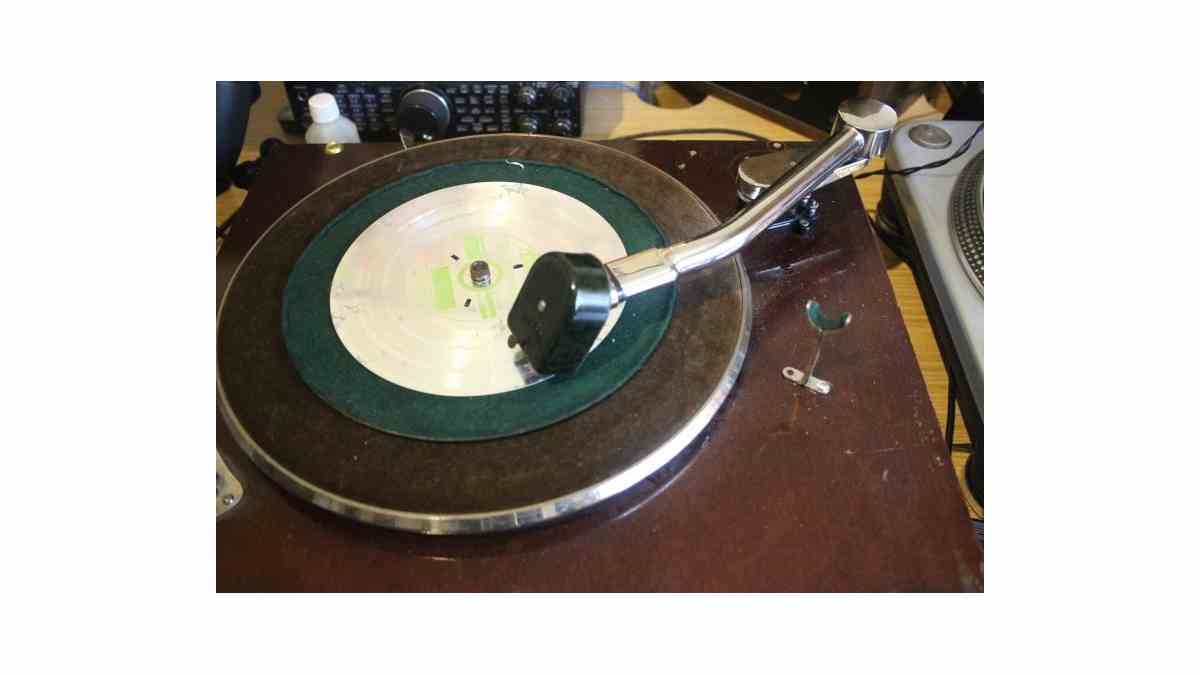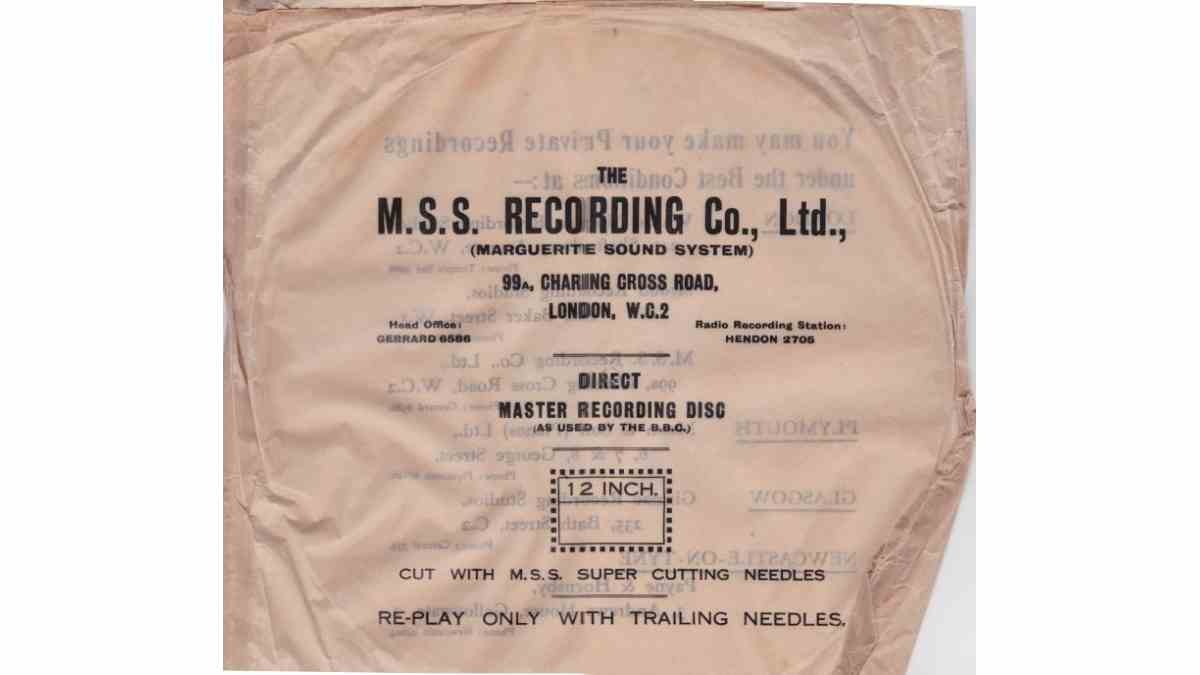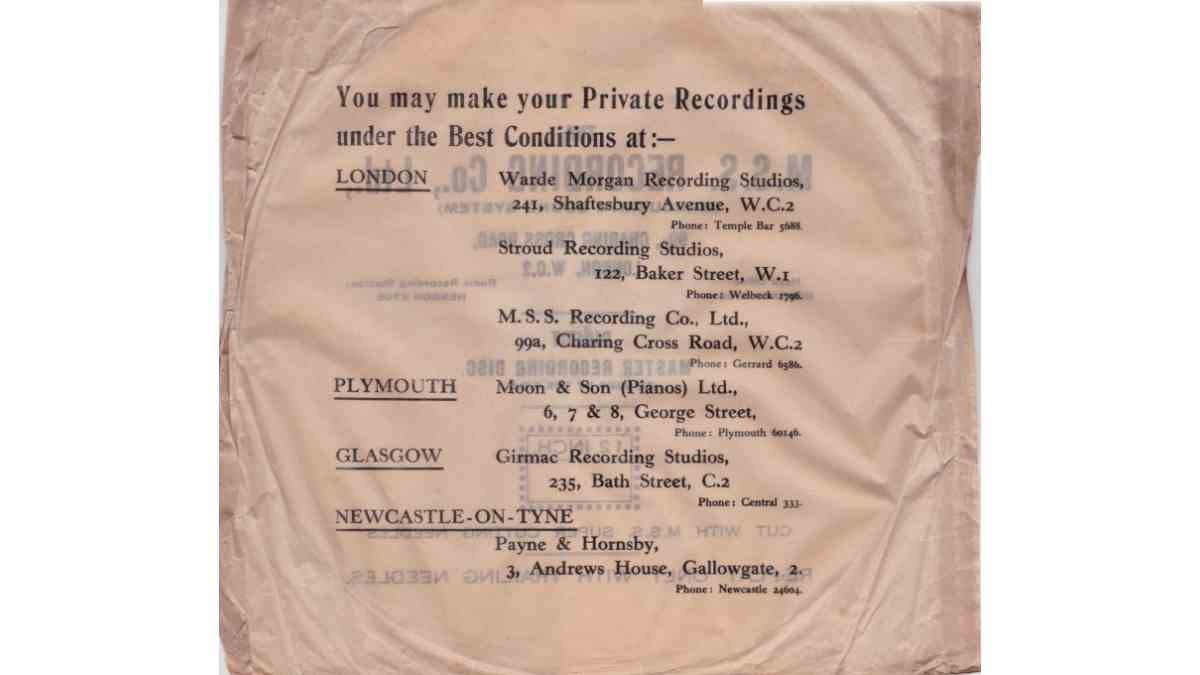Disc recorders for home use
To hear speech, music and song ‘when nobody was there’, was at first a great wonder to the public. Remember: at this time, around 1900, there was no radio broadcasting, let alone television. Moving pictures were still very primitive and, of course, silent. True, there were musical boxes, but they tended to be expensive, and could not talk or sing!
Under construction.
To hear speech, music and song ‘when nobody was there’, was at first a great wonder to the public. Remember: at this time, around 1900, there was no radio broadcasting, let alone television. Moving pictures were still very primitive and, of course, silent. True, there were musical boxes, but they tended to be expensive, and could not talk or sing!
Disc gramophones and cylinder phonographs co-existed (though with much rivalry!) from the late 1890s onwards. However, mid- and higher-price phonographs possessed one very great advantage over the disc. You could quite easily make your own recordings at home on a phonograph. Take out the reproducer, replace it with a recorder, put on a blank cylinder of relatively soft wax, and speak or sing into the horn. Bingo! On replay, you could hear your own voice and those of your family, which was something the disc gramophone could not do. Naturally, sellers of cylinder machines would always denigrate the gramophone because of this ‘defect’. Well, they would, wouldn’t they? 8^)
It was inevitable that this problem would be addressed, and add-on devices would be put on the market to enable home disc recording. The following list is not exhaustive – merely those of which we are aware. It should also be pointed out, that the path to really good quality home disc recording was long, tortuous, and in the end (yet again) was to become very expensive indeed.
Because of this increasing expense, from the mid and later 1930s, there arose local recording studios. Successful music shops and radio dealers would often buy in one of the new but costly disc cutting machines, set aside a room with a piano , and Lo! There was your local studio, where you could go and make a record of yourself playing the piano, or singing with a friend playing the piano. Indeed, many studios retained the services of a local piano teacher, who could be booked in as your accompanist for an extra fee. The whole phenomenon of British provincial recording studios (there were hundreds of them!) was once much neglected, but is now receiving attention, mostly from members of the C.L.P.G.S.
Nicole
The first disc home recording device was put on the market by The Nicole Record Company in late 1904. It was called the “Autorecordeon”. There was apparently a pre-grooved disc, the groove being filled with a waxy compound. A special sound-box and horn was required. Unfortunately no example is known to have survived; and it would seem, so far, that no illustration is to be found in any Nicole catalogue or advertisement.
Neophone
The Neophone discs were vertical cut. Their life was short – 1905-1907 – but during that time, they marketed a disc recording device, at the cost of 30/- (thirty shillings, or £1.50) – around a week’s wages for a skilled factory worker at the time. They are very rare today, as indeed are Neophone records, though they were well promoted & advertised. Following the démise of the company in 1907, the remaining stocks of the attachment were bought up by ‘Edison Bell’, and marketed as their ‘Eureka’ home recorder – see below for a better image.
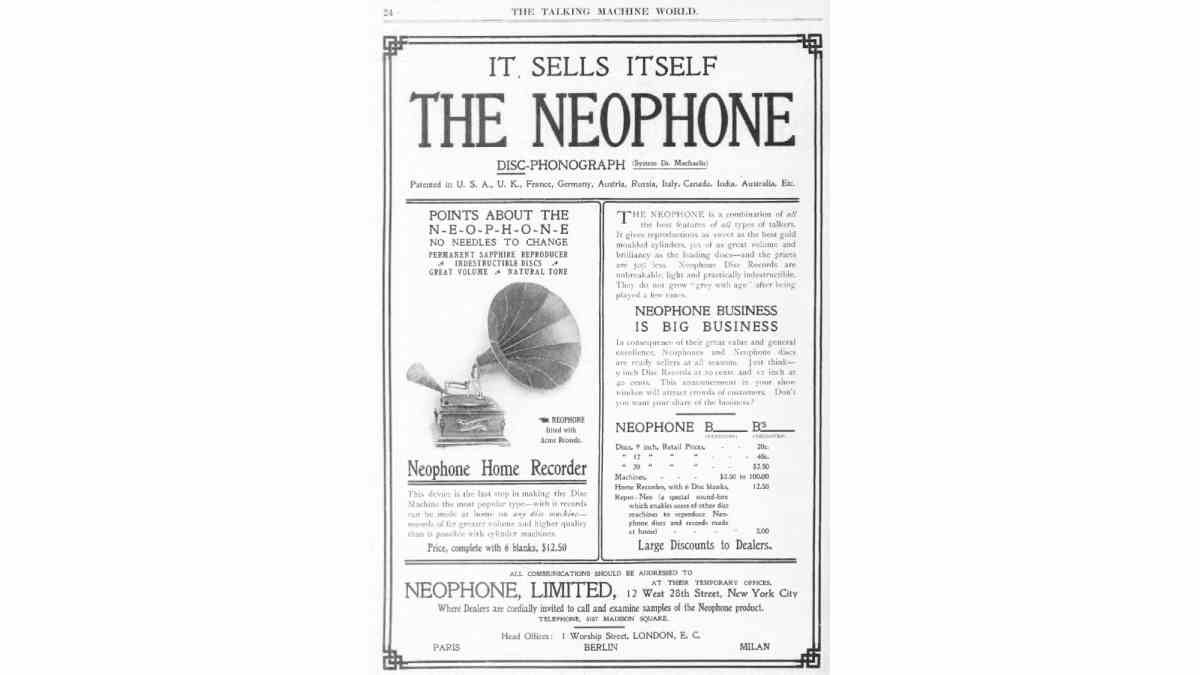
Edison Bell ‘Eureka’
As remarked above, this was the attachment devised by Neophone. The Eureka too is very scarce, but happily, we have an Edison Bell record packet which advertises it, providing much information.
In the upper part, Edison Bell proclaim their New Bell Disc records, which appeared in late 1908. This was their first venture into disc records; hitherto they had produced cylinders. Ironically, these discs were lateral cut, while the Neophone/Eureka was a vertical cut recorder; but to be fair, EB also produced a couple of vertical cut labels around the same time. These were Little Champion and Phona-disc, though those only had a short life as opposed to Bell Disc, which was very successful.
Immediate replay, and a permanent record! Things very much to be desired. Nevertheless, few people can have availed themselves of the Eureka, considering how scarce they are. At this point, we do not know how much it cost in the U.K.
But we are very grateful that EB put a photograph of it on the packet. First, we learn that the records need not be permanent; they could be erased with a solvent, and used again, one hundred times each. Today of course, that would have to be ‘up to one hundred times each’. 8^) There are a very few Eurekas in the hands of collectors, but we do not know whether any discs survive. They were most likely a wax composition, and the solvent would temporarily soften the wax so that the indented groove would merge back into a smooth surface. The mechanism is quite straightforward: a vertical shaft is driven from the centre spindle of the turntable, and the rotation is used to drive a horizontal feed screw, the far end of which rests on a support, most likely screwed into the wooden case of the gramophone, or Discaphone to be more precise. A carriage ran along the feed screw, bearing a horn which terminated in horizontal diaphragm, equipped with a cutting (or embossing) point in its centre. After recording, the disc was played back using the same feed-screw mechanism, this time with the ‘reproducing sound box’ in place of the ‘special recording diaphragm’.
What did the results sound like? It’s impossible to say, but probably not very good! Still, we have to bear in mind that in 1908, practically nobody had ever heard their own voice before. So the novelty would be tremendous, far outweighing the shortcomings of the system…
The Renoplex
September 2021. One that ‘slipped throught the net’! This advert appeared in ‘The Sound Wave’ of September 1919. It was reproduced in Hillandale News No.222. (Journal of the City of London Phonograph and Gramophone Society) We have not yet found any reference to it in the text of the Hillandale News, but will add it here, if any further info. turns up.
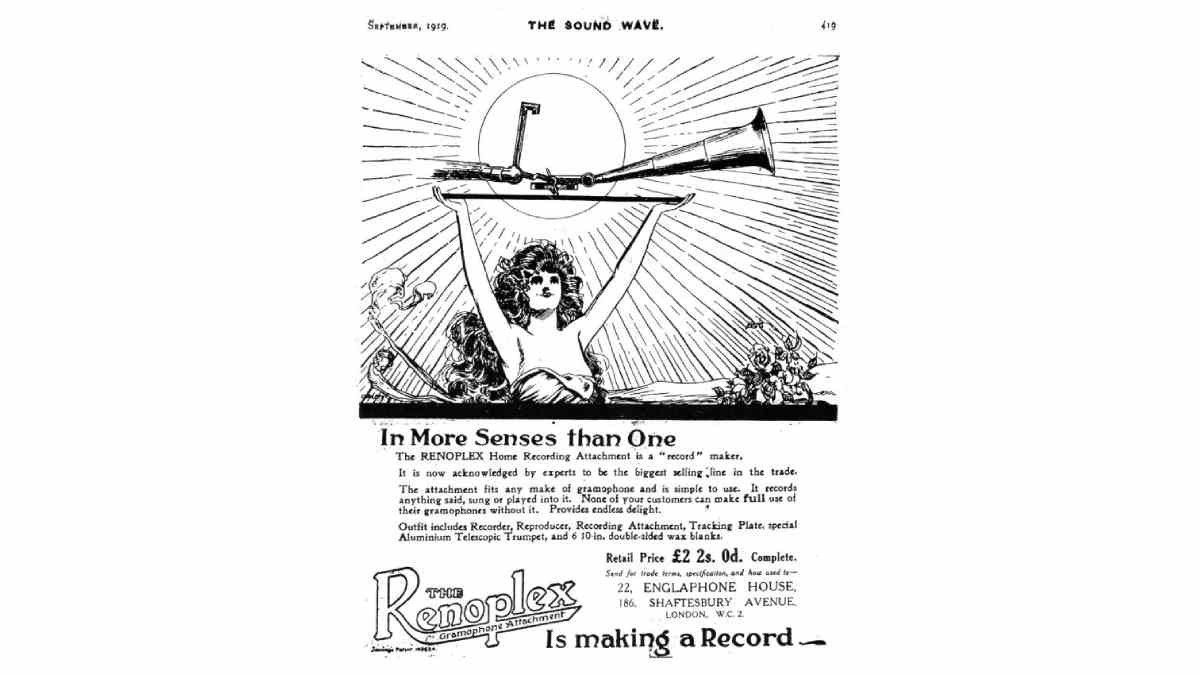
The ‘Retor’
This device appeared in Germany and a marketing company was set up in early 1925. It is assumed that the device came into existence not long before. It may have been imported & sold in the U.K. but in any case has many interesting features. More to the point, we acquired one some months ago and have been working on it, trying to bring it back to life, with a modest amount of success.
It made vertical cut recordings on wax discs. At the time of writing (September 2018) we have just finished a detailed article for possible publication in ‘For the Record’ – the journal of the CLPGS, the national society in the U.K. for phonographs, gramophones and the media played upon them. For more information, visit www.clpgs.org.uk.
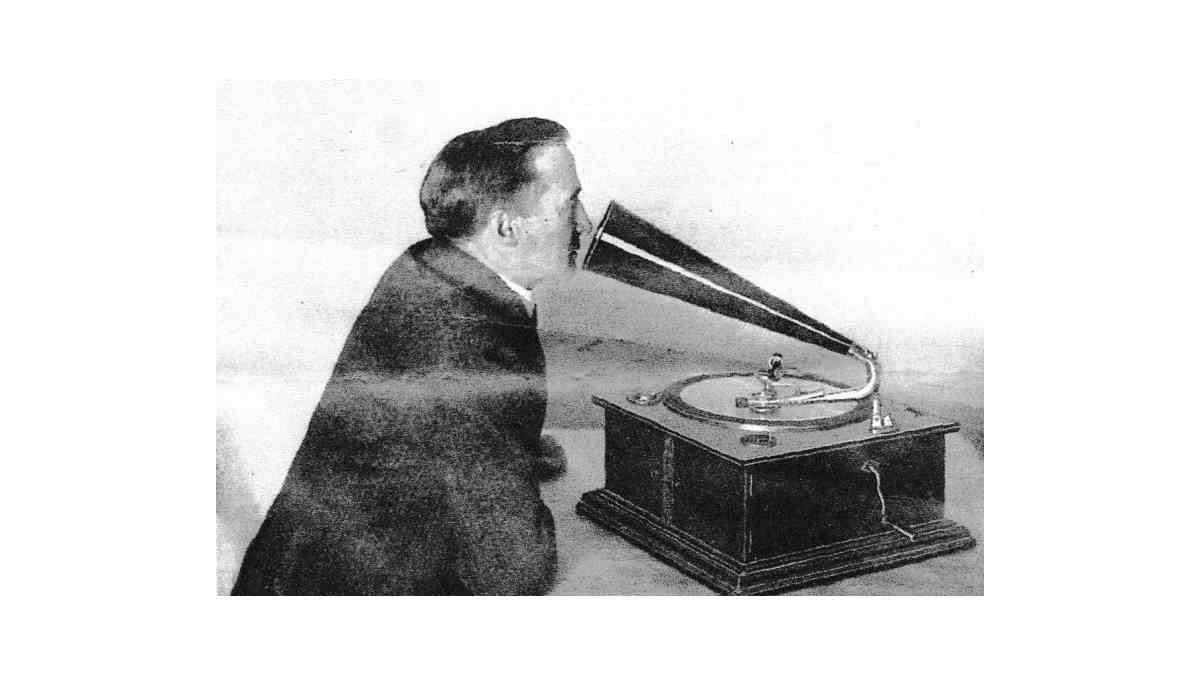
Here is a test recording recently made, merely adding that there are not many examples of mechanical vertically-cut disc recordings after about 1927. 8^) It has been played back on modern equipment, but has not been processed or enhanced in any way.
Speakeasie
Circa 1930. Mechanical System. Lateral embossing on aluminium disc; a larger disc propelled the recording box via an outrigger. We have one of these & need to write it up a.s.a.p.
S G Brown Ltd
The proprietor of this famous company demonstrated a home recording device at the Institution of Electrical Engineers, probably in late 1930. The machine was then written up in the Wireless World magazine in their issue of 21st January, 1931. We have been so bold as to copy the entire article here, but should this infringe any copyright, it will of course be removed.
Kingston Home Recorders
The Wireless World magazine of 28th January 1931 carried a review of the Kingston Home Recorder. This was only a couple of issues after their review of the S G Brown device above. Again, we have taken the liberty of lifting the article here in its entirety; should any copyright have been infringed, it will be removed.
Cairns & Morrison
They had a studio in London, certainly in 1930, using embossing on aluminium; their discs were called ‘Silvatone Souvenir’. They sold their device, which used an electric recorder/pickup.
Faytone
Early 1930s – both mechanical and electrical versions were available.
IMPORTANT: Cover up the centre punched logos when attempting to play a Faytone disc. If your stylus runs across the disc into the punched holes, it will be instantly destroyed.
Ekco ‘Radiocorder’.
Two recordings have been made
- Home recording ca.1932 EKco Radiocorder from UK (YouTube)
- Home recording 1932 EKco Radiocorder update (YouTube)
Made by E K Cole Ltd of Southend-on-Sea, makers of radio sets and other electronic devices, from about 1931. It cost 5 guineas (£5.25). That was a couple of weeks wages for most workers then. Still, it was a well-made device and gives very creditable results.
You attached it to your gramophone. The wheel near the centre spindle drives a feed-screw which will give about 1 minute 40 seconds recording on a 6.5″ disc. An 8″ disc was also available.
The outfit came with a set of leads for connection to your wireless set (hopefully an Ekco of course!) which included a junction box and a volume control. See the videos for much more info & to hear the Radiocorder in action.
Majestic
General view of the Majestic recording device from the early 1930s. The maker’s transfer is on the gearbox (upper centre), but it is so abraded as to be illegible. It is solidly constructed, and weighs in at 760g (= 1lb 7oz). The gearbox was screwed to the motor board of the gramophone (they were always wood in those days), as was the feed screw and support arms pivot. The gearbox was driven by a spring belt, of the sort used on ciné projectors, which passed from a pulley fitted onto the centre spindle of the turntable. This pulley also served to clamp the blank disc to the turntable, to avoid slipping. (The original pulley has currently gone missing; the one shown is a smaller substitute.) The belt drove a vertical shaft in the gearbox, and the rotation was transmitted to the feed screw by bevel gears. A half-nut on the back of the arm engaged in the feed screw, and transported the arm across the disc. The length of the main arm is adjustable over quite a wide range, to suit 10″ and 12″ turntables, and with a length of 5″ (12.7cm) the feed screw was more than capable of recording across a 12″ (30cm) blank disc, assuming your turntable motor had enough torque!
Whether a specialised cutting head was available is not yet known; but the termination of the arm provided for the fixing of either a radial, or a tangentially-mounted head. At this period, dedicated cutting heads hardly existed – if at all – outside established record companies, so a replay head had to double up as a record head, as in the Ekco ‘Radiocorder’ above.
The device was patented in 1931 (thanks to Joe Moore for sending the patent specification), and doubtless offered for sale to the public. It was almost certainly used by the proprietors of Majestic Records, in Blackpool, Lancashire.
Regional, or ‘Territory’ record labels were virtually unknown in this country hitherto. If a regional band somehow got to make records, it had to travel to London to do so. However, the arrival of relatively inexpensive devices such as this, heralded the beginning of local recording studios, and even a few local record labels. Needless to say, Majestic discs are very scarce. They seem to have been mastered by embossing on aluminium blanks, this being more accessible (and cheaper) than the M.S.S. lacquer discs (see M.S.S. below). Thick wax blanks, as used by major companies, would not have worked with the heavy, unsupported heads employed on this class of apparatus.
It is a characteristic of embossing (as opposed to engraving), that a furrow is produced, flanked by ridges – exactly like ploughing a field. Thus, an aluminium disc can be hard to track, as the replay needle may leave the furrow, and ride on two adjacent ridges – which are of course carry almost no signal. It is perfectly possible to electrotype matrix, mother and stamper from an aluminium master; but the finished pressing will possess that same propensity for mis-tracking. This is the case with the disc above. Still, such is the interest of the Majestic Concern, and its preservation of bands such as Jack McCormick’s (they made very few other records) that we give the side above as a sound file.
Coincidentally when we began to play the disc, the stylus immediately went onto two ridges. We have left this recording in place, as an example of the phenomenon.
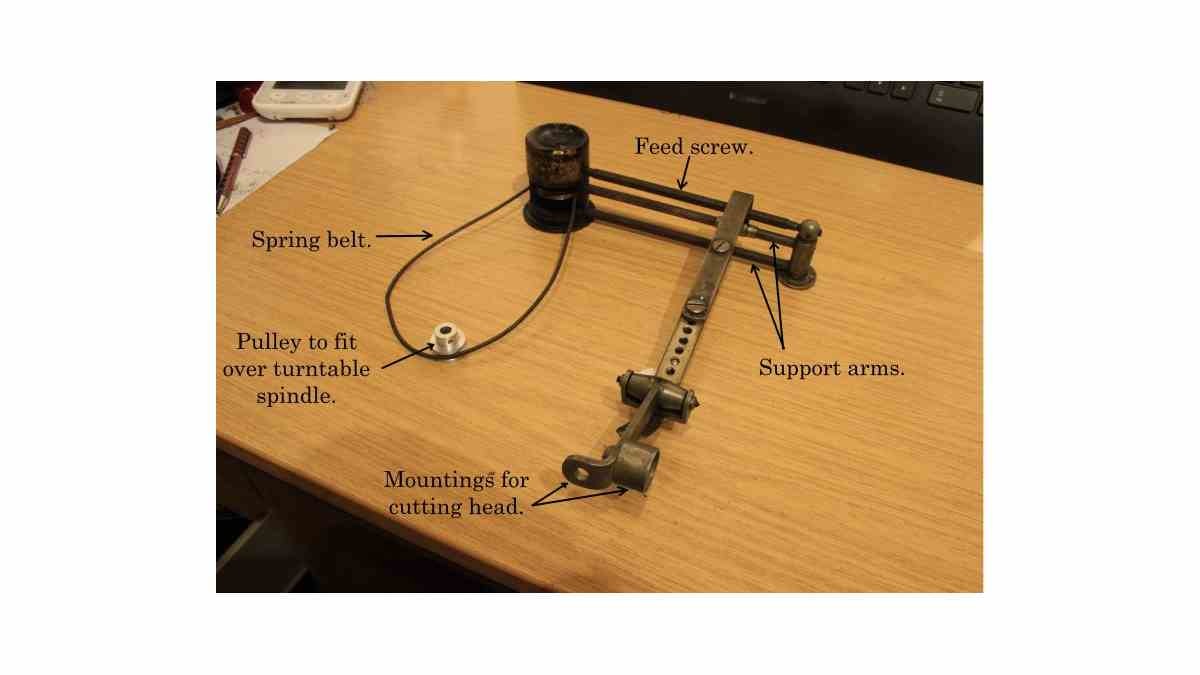
M.S.S. - Marguerite Sound Studios
Developed from the late 1920s by the musician Cecil Watts, in parallel with the aluminium disc coated with nitrocellulose lacquer. This invention of his is still used for mastering vinyl today! His machines were ruggedly built, and his electric cutting head was very successful. With his wife-to-be, Agnes, he set up a recording studio in central London. Of course, he sold equipment; but due to his insistence on really solid engineering, it was expensive, but worked very well. It was rapidly take up by the BBC ca. 1934.
Below are images of an MSS 12″ disc packet, probably from the late 1930s. Other local recording studios using MSS equipment are listed on the back.
Permarec
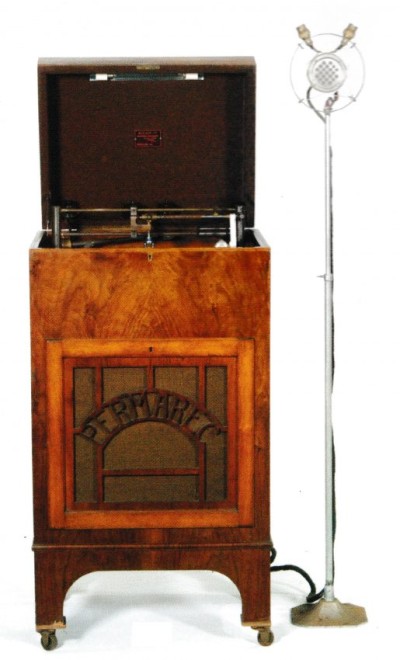
Mid to late 1930s. Made in Germany by Musikon. Factored here by Day & Co., of London. Aluminium disc with coating base on unknown plastic-type coating. This required baking to cure it. They made basic add-on devices, but also very much more elaborate equipments.
Parmeko
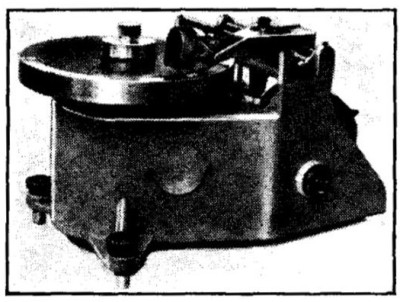
In 1934, Parmeko of Leicester announced a heavy duty disc cutting machine that was clearly not meant for home recording, as the price of £45 indicates – nearly half the price of an Austin Seven car! We include it here as it is an early example of a company making a specialised piece of equipment, which they stated was intended for film studios and commercial purposes. Hitherto, most record companies had made their own cutting lathes, or else they were leasing recording amplifiers and other equipment from Western Electric, Marconi, G.E.C. or R.C.A.
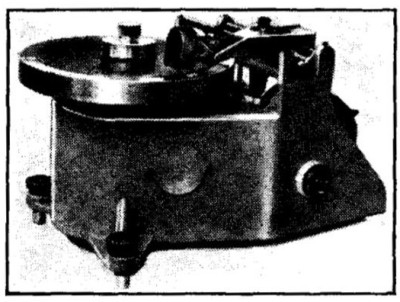
In April 1936, Parmeko launched an ambitious set of equipment which was reviewed in the Wireless World. This time the total cost would have been £173 if you got all the best stuff, like the crystal microphone and its pre-amplifier. Far more than an Austin 7 or a Ford 8.
Bourne Instruments.
In August 1946, the Bourne ‘CDP’ disc recorded was announced in the ‘Wireless World’, then the primary magazine for not just ‘Wireless’ or ‘Radio’, but what later came to be called ‘Electronics’.
The company was still going strong in 1950, as a short announcement was made, again in the WW, that a leaflet was available on application.
In August 1946, the Bourne ‘CDP’ disc recorded was announced in the ‘Wireless World’, then the primary magazine for not just ‘Wireless’ or ‘Radio’, but what later came to be called ‘Electronics’.
In an advert from July 1947. The price has increased somewhat, and an amplifier and microphone were now available, or perhaps always had been!
The company was still going strong in 1950, as a short announcement was made, again in the WW, that a leaflet was available on application. We have not seen that, but by courtesy of Robert Girling, we can reproduce the Operating Instructions for the ‘C.D.P.’ Recorder.

Simon Sound Service
The immediate post-WW2 period was perhaps the culmination of amateur and semi-professsional disc cutting. Simon were evidently producing a disc cutting machine by 1947.
Birmingham Sound Reproducers (B.S.R)
Birmingham Sound Reproducers was founded in 1932, principally to make and supply public address systems. In the mid-1940s they diversified into record players and began to make their own record decks. The company flourished mightily, as any on-line search will show. Based in Old Hill, near Stourbridge and with satellite factories in Northern Ireland and later Scotland, by the later 1960s they were exporting world-wide; one single consignment to Japan consisted of 38,000 record decks! The record cutting machine must have been developed and introduced around 1947. (Stop press: The outfit was exhibited at the National Radio Exhibition, “Radiolympia” in London, Autumn 1947.) It was designed by Desmond O’Connor Roe of BSR, and was available in a number of outfits, including a dual-turntable model. There was also a recording studio open to the public at 88 High Street, Stourbridge with impressive facilities – including a Bluthner full grand piano! Lacquer discs were made in sizes from 5″ to 12″. The studio’s own label was called Claremont – BSR had initially been located in Claremont Street, Old Hill. Alas, it is curious that very few examples of Claremont discs are known; most likely the advent of the tape recorder from about 1950, reduced the demand for one-off recordings, and the studio was closed down after only a very few years.
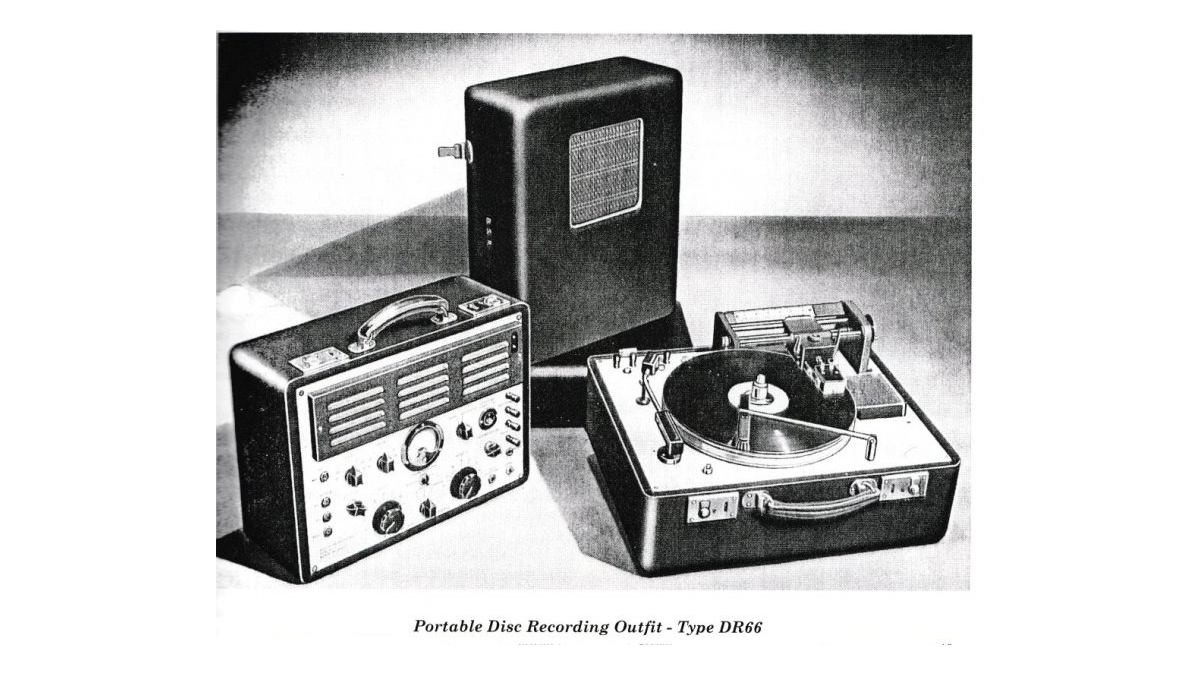
Brown- Early Recording Device
S.G. Brown was a very important company in the telegraphic & radio market in the U.K. from the early 1900s. However, this machine was probably originated by the E.R.D. concern, of which we know little as yet, though one is tempted to write Electrical and Radio Developments – but that is sure to be wrong! It was quite common for a smaller company to be associated with a larger one, which had more available capital and works resources. More research needed.
